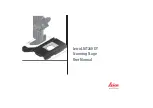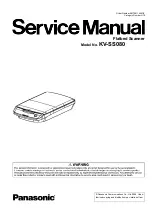
3D Systems, Inc.
7
Target markers are generally small, round stickers that you place either on an object or on a movable surface the part rests on.
After scanning the part and generating a mesh, then the scanner searches for the target markers and attempts to align them
with a previous scan. If enough matches are found, the alignment is successful and you are ready for a new scan. If not enough
matching target markers are found, the alignment fails and you can either retry or use another alignment method.
For more information, See also
Scan an object with target markers
.
Coating a Part
Reflective surfaces scatter the scanner light and create noise artifacts in the final scan data. Laser and white-light scanners do
better when scanning matte, white surfaces. A white powder spray commonly used to create a flat white surface for scanning and
is available at welding supply stores. Other products you can use include some athlete’s foot treatments, spray deodorant with
titanium oxide, and tempera paint from a compressor.
You must spray the part with a uniform, light coat. The thinner the coating, the better. Adding more than a thin coat of white
powder can impact a part’s thickness when scanning. A white powder spay comes off easily and is prone to fingerprints. Mounting
an object to a surface (such as a bolt through the center of a threaded section) can provide a hand-hold for moving the part after
spraying. You can also spray a portion of the part (leaving a section as a hand-hold), complete the first scan, clean the part,
respray the area used as a hand-hold, and then rescan as needed. The following steps are a general procedure for applying a
white powder spay to a part.
1. Apply target markers on an object before spraying. Otherwise, the target markers will slip off the part.
2. If necessary, mount the part or decide which section to use as a hand-hold.
3.
Hold the can 12 to 18 inches from the part and spray a light first coat.
4. Set the object aside to dry for a few minutes.
5. Re-spray any areas that need it.
6. Clean any target markers with a cotton swab prior to scanning if necessary.










































